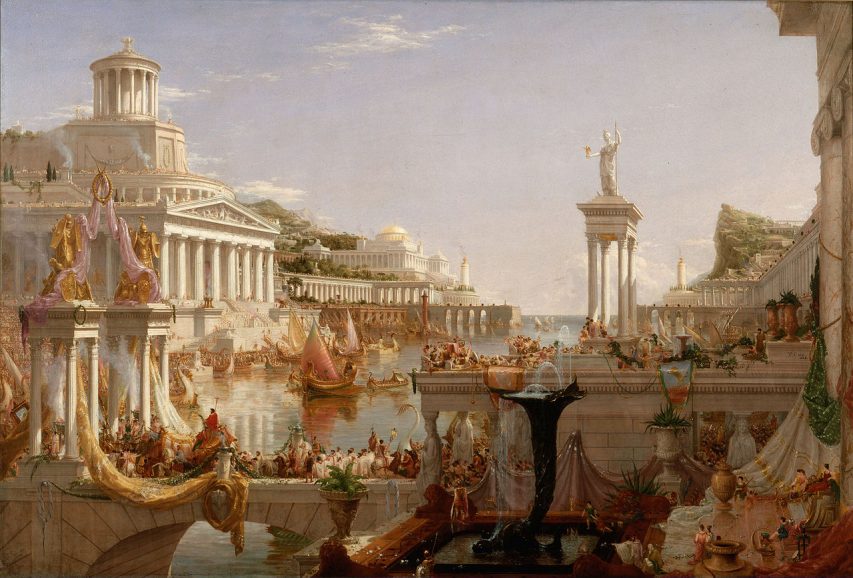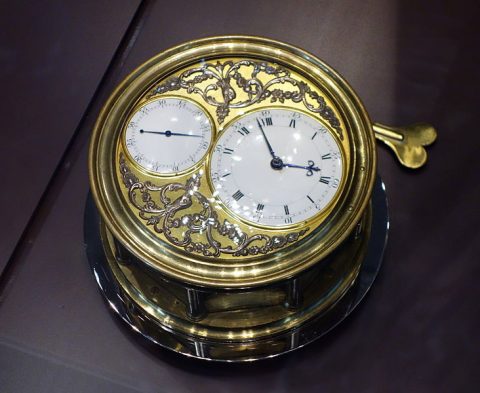Paul Sellers
Published 17 Jan 2020Our Desktop Organiser series was originally released for free on Woodworking Masterclasses, to see Episode 2 straight away click here: https://woodworkingmasterclasses.com/…
Episode 2 will be released on YouTube on Friday 31st January.
Making smaller projects like this one can elevate the demand for precise handwork and the constant throughout this opening video is to establish accuracy first off.
Though this box is similar to one made in Paul’s foundational woodworking course, the design progresses to include all the tenets of drawer making and fitting. The box must be made to exacting tolerances, so Paul takes you one step at a time to show how he works to that end. You can choose any wood you like or have to hand, from Pine to Sapele and Oak to Spruce. If you are new to woodworking, you might prefer to practice some of the steps before you begin the whole box.
For a free PDF of the drawing and cutting list, click here: https://paulsellers.com/desktop-organ…
——————–Want to learn more about woodworking?
Go to Woodworking Masterclasses for weekly project episodes: http://bit.ly/2JeH3a9
Go to Common Woodworking for step-by-step beginner guides and courses: http://bit.ly/35VQV2o
http://bit.ly/2BXmuei for Paul’s latest ventures on his blog
——————–
Instagram: http://bit.ly/2oWpy7W
Twitter: http://bit.ly/33S7RFa
Pinterest: http://bit.ly/35X5uTf
January 18, 2020
Paul Sellers’ Desktop Organiser | Episode 1
Economic interventions during the Roman republic and empire
Even during the republican period, state intervention in the economy — usually to “fix” another problem already caused or exacerbated by previous interventions — often made the situation worse. Fortunately there’s a lot of ruin in a nation, but over a long enough run, you do reach the economic end-game:

“The Course of Empire – The Consummation of Empire” by Thomas Cole, one of a series of five paintings created between 1833 and 1836.
Wikimedia Commons.
Debt forgiveness in ancient Rome was a contentious issue that was enacted multiple times. One of the earliest Roman populist reformers, the tribune Licinius Stolo, passed a bill that was essentially a moratorium on debt around 367 BC, a time of economic uncertainty. The legislation enabled debtors to subtract the interest paid from the principal owed if the remainder was paid off within a three-year window. By 352 BC, the financial situation in Rome was still bleak, and the state treasury paid many defaulted private debts owed to the unfortunate lenders. It was assumed that the debtors would eventually repay the state, but if you think they did, then you probably think Greece is a good credit risk today.
In 357 BC, the maximum permissible interest rate on loans was roughly 8 percent. Ten years later, this was considered insufficient, so Roman administrators lowered the cap to 4 percent. By 342, the successive reductions apparently failed to mollify the debtors or satisfactorily ease economic tensions, so interest on loans was abolished altogether. To no one’s surprise, creditors began to refuse to loan money. The law banning interest became completely ignored in time.
The original “dole” was implemented as part of the reforms of the Gracchi brothers, and quickly became a major part of government spending:
Gaius, incidentally, also passed Rome’s first subsidized food program, which provided discounted grain to many citizens. Initially, Romans dedicated to the ideal of self-reliance were shocked at the concept of mandated welfare, but before long, tens of thousands were receiving subsidized food, and not just the needy. Any Roman citizen who stood in the grain lines was entitled to assistance. One rich consul named Piso, who opposed the grain dole, was spotted waiting for the discounted food. He stated that if his wealth was going to be redistributed, then he intended on getting his share of grain.
By the third century AD, the food program had been amended multiple times. Discounted grain was replaced with entirely free grain, and at its peak, a third of Rome took advantage of the program. It became a hereditary privilege, passed down from parent to child. Other foodstuffs, including olive oil, pork, and salt, were regularly incorporated into the dole. The program ballooned until it was the second-largest expenditure in the imperial budget, behind the military. It failed to serve as a temporary safety net; like many government programs, it became perpetual assistance for a permanent constituency who felt entitled to its benefits.
In the imperial government, economic interventions were part and parcel of the role of the emperor:
In 33 AD, half a century after the collapse of the republic, Emperor Tiberius faced a panic in the banking industry. He responded by providing a massive bailout of interest-free loans to bankers in an attempt to stabilize the market. Over 80 years later, Emperor Hadrian unilaterally forgave 225 million denarii in back taxes for many Romans, fostering resentment among others who had painstakingly paid their tax burdens in full.
Emperor Trajan conquered Dacia (modern Romania) early in the second century AD, flooding state coffers with booty. With this treasure trove, he funded a social program, the alimenta, which competed with private banking institutions by providing low-interest loans to landowners while the interest benefited underprivileged children. Trajan’s successors continued this program until the devaluation of the denarius, the Roman currency, rendered the alimenta defunct.
By 301 AD, while Emperor Diocletian was restructuring the government, the military, and the economy, he issued the famous Edict of Maximum Prices. Rome had become a totalitarian state that blamed many of its economic woes on supposed greedy profiteers. The edict defined the maximum prices and wages for goods and services. Failure to obey was punishable by death. Again, to no one’s surprise, many vendors refused to sell their goods at the set prices, and within a few years, Romans were ignoring the edict.
Actually that last sentence rather understates the situation. The Wikipedia entry describes the outcome of the Edict:
The Edict was counterproductive and deepened the existing crisis, jeopardizing the Roman economy even further. Diocletian’s mass minting of coins of low metallic value continued to increase inflation, and the maximum prices in the Edict were apparently too low.
Merchants either stopped producing goods, sold their goods illegally, or used barter. The Edict tended to disrupt trade and commerce, especially among merchants. It is safe to assume that a black market economy evolved out of the edict at least between merchants.
Sometimes entire towns could no longer afford to produce trade goods. Because the Edict also set limits on wages, those who had fixed salaries (especially soldiers) found that their money was increasingly worthless as the artificial prices did not reflect actual costs.
History Summarized: Classical India
Overly Sarcastic Productions
Published 17 Jan 2020Classical and Medieval Indian History is a tale of constant flux — but in between the dozens and hundreds of states at play across the peninsula, there are clear trends that arise. Let’s take this chapter of history as an opportunity to dig into different types of sources, and try and wrap our heads around a story that doesn’t fit neatly into a single chronology.
FURTHER SOURCES: The Discovery of India by Jawaharlal Nehru, “A History of India” by Michael H. Fisher (lecture courtesy of The Great Courses).
Our content is intended for teenage audiences and up.
PATREON: https://www.Patreon.com/OSP
DISCORD: https://discord.gg/y7uUnzJ
MERCH LINKS: https://www.redbubble.com/people/OSPY…
OUR WEBSITE: https://www.OverlySarcasticProductions.com
Find us on Twitter https://www.Twitter.com/OSPYouTube
Find us on Reddit https://www.Reddit.com/r/OSP/
The innovative 1720s
In the latest Age of Invention newsletter, Anton Howes says the real Roaring Twenties were back in the eighteenth century:
Last week I called the 1720s an era of schemes. 1720 was the year of the South Sea Company’s crash, as well as the collapse of John Law’s Mississippi Company in France. But the decade saw some oft-neglected innovations too. As I never tire of saying, Britain’s extraordinary acceleration of innovation was about all industries, not just the famous ones of cotton, coal, iron, and steam — a point that the 1720s demonstrate perfectly.
For a start, it was the decade in which smallpox began to be systematically eradicated through inoculation. Lady Mary Wortley Montagu, having observed the procedure in the Ottoman Empire, had her daughter inoculated in London following an outbreak in 1721. The same epidemic prompted the trialling of inoculation in New England, and the reports of these successes provided the statistical evidence for it to be more widely spread. Soon, through Lady Montagu’s aristocratic connections, even the royal children were being inoculated. Inoculation was still dangerous — it was decades before non-deadly cowpox was discovered to also confer immunity to smallpox — but the 1720s marked the beginning of the end for one of humanity’s greatest killers.
[…]
Most famous, however, was the search for longitude. When at sea, it was relatively easy to tell how far north or south you were, but not how far east or west. The implications for navigation were immense. William Whiston, a protégé of Newton, was in 1714 instrumental in lobbying for the creation of a substantial government prize for a solution, and spent much of the following decades trying to win it. His earliest proposal, along with the mathematician Humphrey Ditton, was for ships anchored at fixed locations to essentially shoot fireworks at fixed intervals. By comparing the difference between seeing and hearing the flashes, you might calculate your longitude (it’s actually not that dissimilar to the principle that underlies GPS).
Marine chronometer “Copie No. 18″, Thomas Mudge, Jr., Robert Pennington, Richard Pendleton, et al, London, 1795 – Mathematisch-Physikalischer Salon, Dresden.
Photo by Daderot via Wikimedia Commons.But unlike with the medical advances, the poets were having none of it. As one of them rather crudely put it:
The longitude miss’d on
By wicked Will Whiston;
And not better hit on
By good master Ditton.
So Ditton and Whiston
May both be bepist on;
And Whiston and Ditton
May both be beshit on.Whiston and the other longitude-searchers also investigated using the earth’s magnetic variation — he produced perhaps the first map with isogonic lines, indicating where compass needles dipped — as well as solar eclipses. And as longitude could be found on land by looking at the eclipses of Jupiter’s moons, he tried to develop telescopes so that they could observe such events on the unsteady sea.
Nonetheless, the solution came from one of George Graham’s friends, the clockmaker John Harrison. Starting in the 1720s, Harrison developed a timekeeping device — the marine chronometer — that would keep its accuracy despite the rocking and rolling and atmospheric changes from being at sea. By comparing your local time with the time at Greenwich shown on the chronometer, you could calculate your longitude. (Though by the time his device came into use in the 1770s, another method had been discovered that involved observing the moon).
And of particular interest to woodworkers who also have historical interests:
While scientific minds sought the longitude, consumer items were also being transformed. In the 1720s, a ship’s carpenter to Jamaica, Robert Gillow, was among the first to import mahogany to Britain, creating a tradition of furniture-making in Lancaster that even the fashion-conscious French would come to regard jealously.
Tank Chats #59 Sherman Grizzly | The Tank Museum
The Tank Museum
Published 16 Nov 2018David Willey, Tank Museum Curator, presents a Tank Chat on the Sherman Grizzly.
This version of the Sherman was built in Canada from October 1943. After the fall of France, the Canadians began making their own vehicles, beginning with the Ram tank based on the M3 Lee chassis before moving on to a modified M4 Sherman. Only about 180 were produced.
This vehicle is currently on loan to the Heeresgeschichtliches Museum Wien.
Support the work of The Tank Museum on Patreon: ► https://www.patreon.com/tankmuseum
Visit The Tank Museum SHOP: ► https://tankmuseumshop.org/
Twitter: ► https://twitter.com/TankMuseum
Tiger Tank Blog: ► http://blog.tiger-tank.com/
Tank 100 First World War Centenary Blog: ► http://tank100.com/ #tankmuseum #tanks #tankchats
QotD: Men and talking
There’s this stereotype that says women love to talk and men don’t. There’s probably a little truth to that, but the real problem in that area between men and women tends to come from the topics women want to talk about. As a general rule, most men aren’t very interested in talking about their feelings. Also, the mundane details of their day? Where they went to lunch? Who said what to whom? Not only are men not interested in discussing these things, they’re afraid if they do, it might prompt the woman to spend 15 minutes telling him all the details of her day.
Also, because many women tend to over-analyze, they assign all sorts of deep meaning to trivial gestures and then demand explanations. Sometimes a rose is just a rose and five minutes of silence is just a man thinking about what he has to do at work tomorrow. You want to get a man to talk? It’s not hard. Ask him to explain what’s going on in a UFC fight or what his favorite sexual fantasy is and you’ll have trouble getting him to shut up.
John Hawkins, “5 Things Women Do That Secretly Annoy Men”, PJ Media, 2012-08-23.







